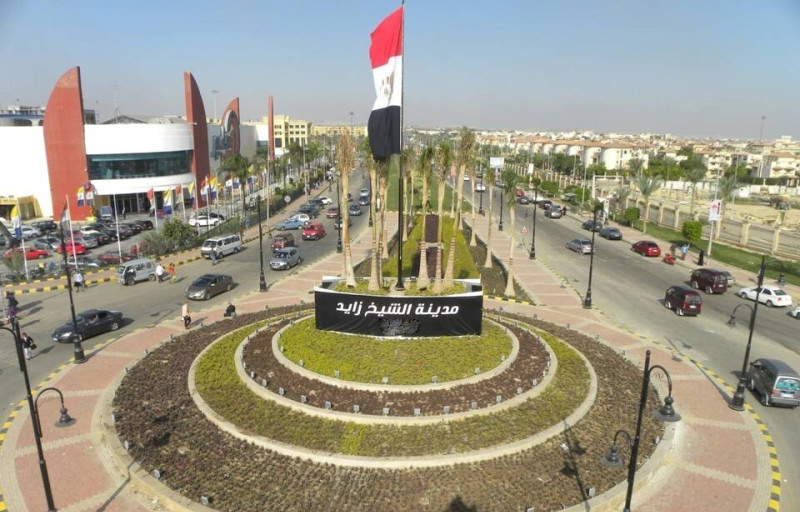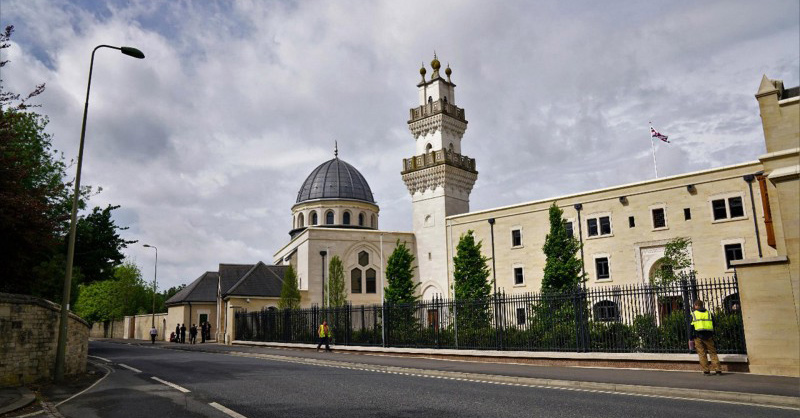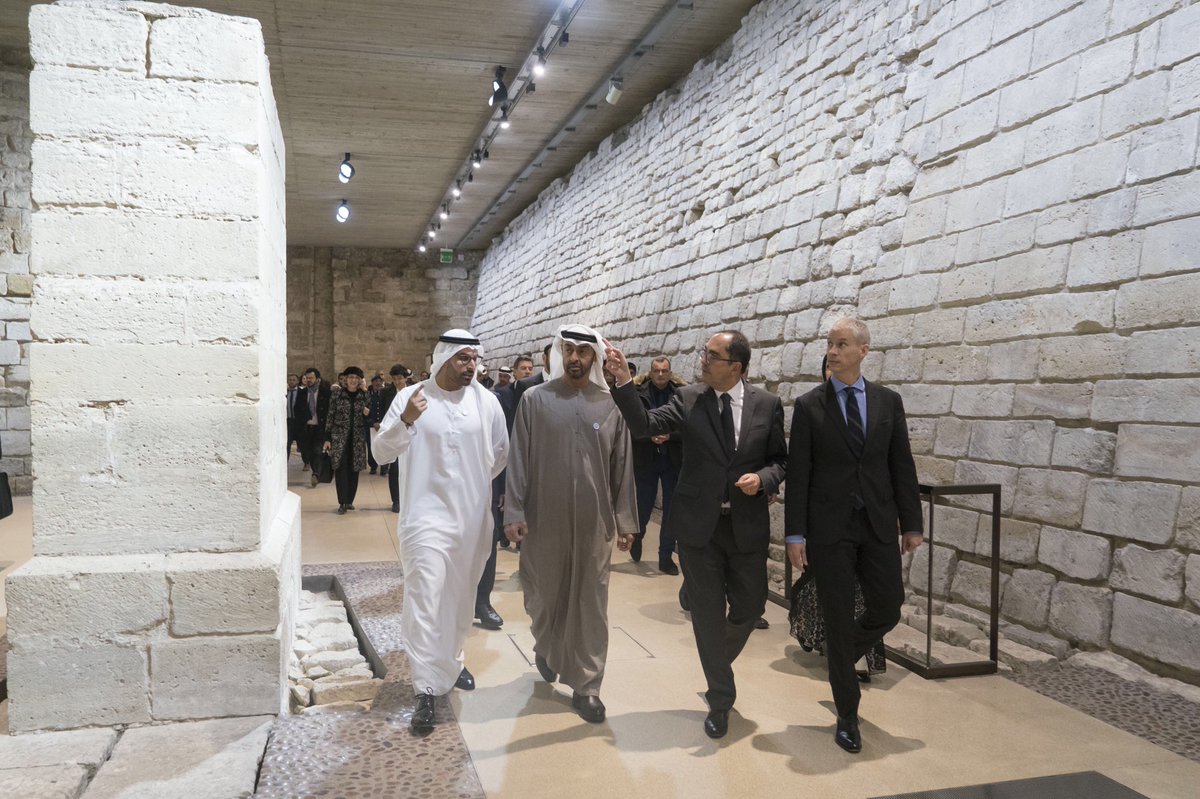
Landmarks carrying the name ‘Zayed’
In this section, we will learn about some landmarks that carry the name ‘Zayed’, including mosques, hospitals, cultural and scientific institutions, residential cities and villages across all six continents. Let us begin with:
Mosques
Dozens of mosques worldwide carry the name of the late Sheikh Zayed, such as:
- Sheikh Zayed Mosque in Oxford, the UK
- Sheikh Zayed Mosque in Nairobi, Kenya
- Sheikh Zayed Mosque in Stockholm, Sweden
- Sheikh Zayed Mosque in Kira, Ethiopia
- Sheikh Zayed Mosque in Ningxia, China
These mosques have become prominent centres for Islamic studies, embodying a message of co-existence, tolerance and openness to others.
Schools and colleges
The late Sheikh Zayed bin Sultan Al Nahyan believed that the progress of nations is measured by the level and spread of education. Thus, he established schools, institutes and colleges in many countries, including:
- Sheikh Zayed Center in the Louvre Museum, France
- Zayed College of Administrative and Legal Sciences in Bamako, Mali
- Zayed Girls’ College in New Delhi, India
- Zayed College of Computer Science in Chittagong, Bangladesh
- Zayed Cultural Center in Stockholm, Sweden
- Sheikh Zayed Center for Arabic and Islamic Studies at the Beijing Foreign Studies University in in China’s capital
- Zayed Girls’ College in Auckland, New Zealand
Medical Centres and Hospitals
Hospitals and medical centres bearing the name of Sheikh Zayed provide a wide range of healthcare services worldwide in line with the highest international standards. Examples include:
- Sheikh Zayed Institute for Pediatric Surgical Innovation in Washington, DC.
- Zayed Child Care Center in Kenya
- Zayed Regional Center for Sight Rescue in Gambia
- Zayed Centre for Research into Rare Diseases in Children in London
- Sheikh Zayed Hospital in Nouakchott, Mauritania
- Zayed Maternity and Childhood Hospital in Kabul, Afghanistan
- Sheikh Zayed Hospital in Kosovo, Bosnia
- Sheikh Zayed Specialised Hospital in the 6th of October City, Egypt
- Sheikh Zayed Hospital in Rabat, Morocco
Cities
Several cities bear the name of Sheikh Zayed in gratitude for his legacy, such as Sheikh Zayed City in Ismailia, Egypt, and Sheikh Zayed City in 6th of October district. Palestine honoured him with Sheikh Zayed City in Gaza and Sheikh Zayed Suburb in Jerusalem, while there is a Sheikh Zayed City in Bahrain.

Birth of the founding leader

Sheikh Zayed was born in Al Hosn palace in 1918, to Sheikh Sultan bin Zayed. He was named after his famous grandfather, known as Zayed the Great, who ruled Abu Dhabi from 1885 till 1909.Sheikh Zayed’s personality was formed at an early stage living in Al Ain city, where he gained exceptional personal character, leadership and political qualities among the valleys and dunes.
Ruler of Al Ain

In 1946, Sheikh Shakhbout bin Sultan Al Nahyan assigned his brother, Sheikh Zayed as Al Ain Ruler and Ruler’s representative in the Eastern Region. Sheikh Zayed was able to end conflicts between Bedouin tribes in Al Ain, leading to further love and respect from the people living there.
Sheikh Zayed opened his majlis in Al Jahili Fort in Al Ain to welcome citizens to learn more about their problems and give financial support for those in need.
Demarcation of boundaries for Abu Dhabi

When Sheikh Shakhbout realised Sheikh Zayed’s political, diplomatic and negotiations skills, Sheikh Zayed was assigned to accomplish the demarcation of Abu Dhabi’s borders. This was a sign that Sheikh Shakhbut trusted Sheikh Zayed’s wisdom and composure and he knew that Sheikh Zayed could pass any obstacles to accomplish his mission in a peaceful manner. Sheikh Zayed accomplished this mission successfully, through a number of treaties between Abu Dhabi and the neighbouring Emirates.
Abu Dhabi Ruler and the Founder of the Federation

Sheikh Zayed assumed power in Abu Dhabi on 6 August 1966, which is considered as an auspicious occasion that marks the beginning of the development and the prosperity of the UAE.
Sheikh Zayed assumed power as the Ruler of Abu Dhabi, at the same time when Britain announced the withdrawal of all its military forces from the Gulf. Sheikh Zayed realised the importance of filling the political and military vacuum in the area that would result from this withdrawal. He was convinced that a strong union between the Trucial States could protect it, so he used diplomacy to convince the leaders of the importance of the union.
The Trucial States Development Fund

Sheikh Zayed translated his thoughts and principles about the union and exchanging support between the Trucial States into action, by allocating a large amount of Abu Dhabi’s income from oil to support the Trucial States Development Fund, even before the beginning of the union negotiations.
The Union negotiations

After their historical meeting at Al Semha, Sheikh Zayed bin Sultan Al Nahyan and Sheikh Rashid bin Saeed Al Maktoum, announced a federation between the two Emirates. This federation was the first step towards establishing the United Arab Emirates. The two wise rulers agreed on the importance of the union for the country and its citizens' prosperous, after the British withdrawal from the Gulf, and to protect the potentially oil rich coast from the ambitions of powerful neighbours.
Politics & wisdom

Sheikh Zayed’s political ingenuity was reflected clearly in the formation of the UAE. It was obvious, when he insisted on joining the League of Arab States and the United Nations, within a few days after announcing the union. This was an affirmation of the seriousness of the union and its commitment to become a vital part of the international community.
The beginnings of UAE diplomacy

Sheikh Zayed led the newly formed UAE by enhancing its position on the world’s map. Even before the official announcement of the union, he invited Emiratis who held university degrees to a meeting at the headquarters of the Federal Government in Sharjah. Some were chosen to attend an intensive training in diplomacy, to qualify them to hold various positions in UAE’s embassies. Sheikh Zayed ordered the establishment of four embassies and a diplomatic delegation to the United Nations. He wanted these embassies to contribute in enhancing his intensive diplomatic efforts, to stabilise the country’s international position as a strong and independent state.
Union hero and development leader

Sheikh Zayed led a massive development process. The wise leader started construction and development projects all over the country, revamped the education system to enhance the UAE’s steps towards progress, development, and prosperity, which ensured the whole country, blossomed under the leadership of a rare, great, and generous leader.
The Unification of the Armed Forces

After announcing the union, Sheikh Zayed unified the Emirates’ armies, under one flag and one leadership, to strengthen, defend and protect the new country, and ensure peace and security. On 6th of May 1976, the UAE announced the launching of the UAE Armed Forces, under one leadership and one flag. This announcement gave a powerful impetus to strengthen the union, and gave the newly formed country the political importance it was dreaming to achieve.





